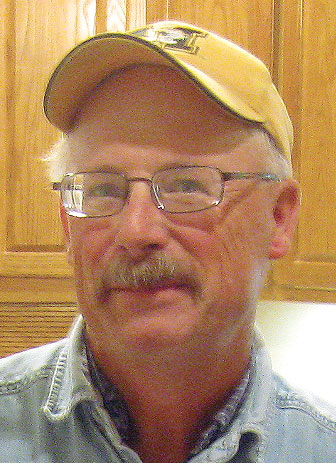 Selling Beef with Taste
Selling Beef with Taste
“Our beef is not your conventional beef from the grocery or restaurant. It’s beef you will remember. It’s got a taste to it.”
Tom Landers sits at his dining room table with wife, Becky, and his mother, Elizabeth. Elizabeth’s husband started farming on this acreage west of Bona, Mo., in Dade County, more than 50 years ago.
Tom and Becky continue the tradition. Their operation can be summed up in one word; diversity.
The tasty beef comes from, of course, their cattle operation. Tom buys open heifers at the Springfield Livestock Marketing Center. “I use a buyer who knows what I want.” Tom likes to buy them at about 425 pounds with small to medium frame sizes and docility. “I’m not going to use a wild animal on slaughter day. You can waste a year’s work and ruin a carcass.” He says heifers are cheaper than steers. Most will be Angus. “The big framey things can eat a lot of corn and grain in the feedlot but that won’t work for our beef.”
He’ll graze them for about a year. The bulk of those heifers will end up back at the same sale barn, about 300 pounds heavier and the process starts all over again. “We load up for sale and I usually say ‘send me home a load the same day,’” typically a gooseneck-load. “It takes about a year to get that 300 (on grass); not the fastest gain, but it’s cheap.”
With maybe 90 percent going back to the sale barn, it makes this a sort of backgrounding operation. The remaining 10 percent will stay behind and become a namesake-meat of Landers Lean Meats. Tom is quick to note, however, that lean and grass-fed doesn’t equate with no marbling.
With the help of 200 acres of mostly fescue, a year or so to pack on some poundage, and packaging from Golden City Meats, those heifers will make regular appearances, albeit vacuum packed, labeled and USDA inspected, at the Farmers Market of the Ozarks in Springfield, Mo. Both Tom and Becky are University of Missouri alums so they are known as the Black-and-Gold booth.
But Customers Shall not Live by Beef Alone
Behind their home is a small pasture, ringed with electric wire and inside that is a smaller square of electrified netting. Scurrying about, as Tom collects a large basket of eggs, are about 140 reddish-colored hens. These are Isa Browns and look to the untrained eye like a Rhode Island Red. “We like them because they lay early and consistently throughout the winter,” Becky mentioned.
“I call them ‘pastured.’ Free-range means no fence. But we have free-range foxes and coyotes,” Tom points out.
On average, more than 100 eggs will be gathered daily, and as with the beef, most are sold at the Farmers Market.
These layers came on board in May but will leave the farm after one year of work and a new bunch will be brought in. Tom noted, “We used to go two years but production was declining so we backed them up to one year.”
Wait, There’s More
The Landers run a broiler operation too. And you guessed it, birds are sold at the farmers market and directly off the farm. His Joel-Salatin-inspired chicken-tractors are empty right now. Becky noted, “We don’t do that in cold weather.”
In a field of tall green fescue Tom keeps a series of small portable broiler houses. Nothing much to speak of – 2x4s, chickenwire, barn metal and some electric wire around the bottom. Each pen might hold 70-85 birds. It takes about 7 1/2 to 8 1/2 weeks to finish a bird, depending on the season. They sell whole chickens, which weigh about 4 pounds.
Some customers help out on processing day and are paid in meat. It takes about four hours to pluck, and remove feet, heads and innards. Some customers pick theirs up in the afternoon. The rest will end up, after chilling, in the freezer for the farmers market. Workers go home with about four chickens.
Still More
Pork is the fourth leg of their diversity program. Tom buys young feeder pigs and feeds them out to 250 pounds on a diet of corn, which Tom grinds, soybean meal and a vitamin pre-mix.
These pigs (usually six per unit) live above-ground on 10×24 platforms made of oak planks and welded pipe. Each is ringed with short metal panels, a shed-like three-sided house at one end, a nipple-waterer and a feeder. The end of the shed can be opened in warm weather and a water-mister runs along the front edge of the shed. These platforms are moved weekly with a tractor. Spaces between the planks allow the pigs to push their waste to the ground below.
Tom hangs on to pigs for about four months – with about half going to the locker every two months.
Pork is also processed in Golden City, and as with all Landers product, marketed primarily at the farmers market. “We like the cure on their pork. Their sugar cure is what we and our customers really like,” added Becky.
Speaking about their entire operation, “Farmers market is more lucrative,” according to Tom, “but it’s more work and time – up at 4 a.m. on a Saturday, load the trailer, freezers, work all day and then back home again at 3 or 4 in the afternoon.”
The Landers rely mostly on word-of-mouth and some social media for marketing. Becky is retired but working part-time and Tom works for Pennington Seed in Greenfield, Mo.
For all their products, they don’t use chemicals or hormones. Becky shares, “We eat the same food as you so it’s going to be good quality.” Elizabeth was quick to chime in, “They never get sick.”
As long as that holds true, they’ll be at the Farmers Market of the Ozarks about every other week wearing their black-and-gold.







